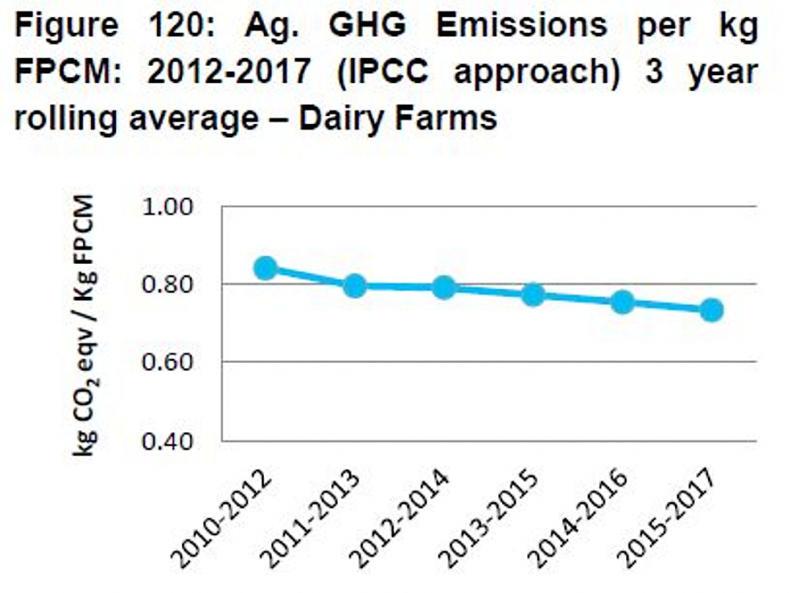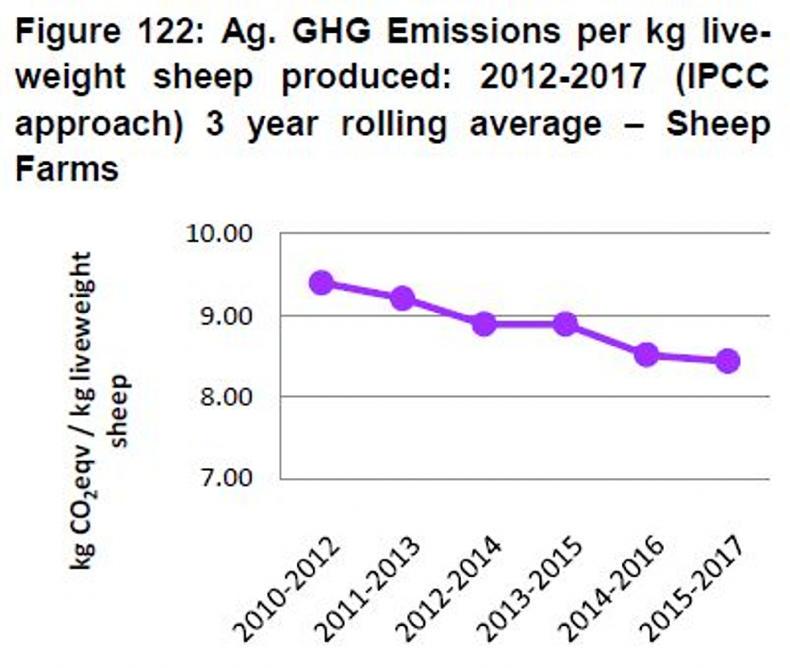The greenhouse gas emissions caused by the production of each unit of Irish milk, beef and lamb decreased over the period 2015-2017, according to the National Farm Survey compiled by Teagasc in a new sustainability report. This continues the trend observed in previous years. Each kg of milk produced in 2017 (corrected to 4% fat and 3.3% protein) released 0.72kg of carbon dioxide equivalent (CO2e) from farming activity in Ireland. This is the portion reported under the country's national obligations against EU targets.
The greenhouse gas emissions caused by the production of each unit of Irish milk, beef and lamb decreased over the period 2015-2017, according to the National Farm Survey compiled by Teagasc in a new sustainability report. This continues the trend observed in previous years.
Each kg of milk produced in 2017 (corrected to 4% fat and 3.3% protein) released 0.72kg of carbon dioxide equivalent (CO2e) from farming activity in Ireland. This is the portion reported under the country's national obligations against EU targets.
When taking into account the full life cycle of milk including imported feed, the total emissions were 1.14kgCO2e per kg of milk.
"Additional milk output in the post milk quota era has been produced at lower level of emissions intensity," Teagasc reported.

Source: Teagasc
Irish-based agricultural emissions from the production of each kg of liveweight beef were 11.9kg in 2017. This is down from 13.3kgCO2e in 2012. This, too, has been on a declining trend, especially in recent years.

Source: Teagasc
There has also been a steady decrease in the carbon intensity of agricultural greenhouse gas emissions from each kg of lamb product, down to 8.2kg in 2017.

Source: Teagasc
However, Teagasc economist Cathal Buckley pointed out that overall emissions from agriculture have been increasing because production is on the rise. For example, in dairy: "The efficiency per kg of fat and protein corrected milk is falling, but emissions per cow are increasing. What overrides everything is the increase in the dairy herd," Buckley said.
Economic and social sustainability
Teagasc's sustainability report also includes findings on the economic and social viability of farms, such as profitability, rural isolation and number of hours worked by farmers.
It shows a clear link between more profitable farms and higher carbon efficiency – though there is also a higher nitrogen surplus on the most efficient farms, which can lead to water quality issues.
“All too often in the sustainability debate, the climate and the environment take precedence. It is difficult for farmers to continue to be green while they’re in the red. In this context, the Teagasc sustainability report must be welcomed,” said IFA president Joe Healy.
Read more
Taoiseach places farmers at centre of climate plans
Milk carbon footprint continues to shrink – Teagasc
Oireachtas climate committee to reject farm carbon tax





SHARING OPTIONS: